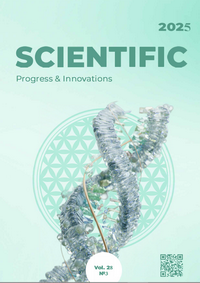General organizational provisions concerning the set and conduct of forensic veterinary expert examinations in case of animal injuries inflicted with sharp-pointed instruments
DOI:
https://doi.org/10.31210/spi2025.28.03.34Keywords:
forensic expert examination, forensic veterinary expert examination, complex forensic expert examinations, criminalistics, animals, injuries, cruelty, sharp-pointed instrumentsAbstract
This paper is structured as follows: grounds and stages for setting forensic veterinary expert examination; the stages of forensic veterinary expert examination (SFVEE) for animal injuries inflicted with sharp-pointed instruments; the subject of the forensic veterinary examination for animal injuries inflicted with sharp-pointed instruments; expert tasks of the forensic veterinary expert examination (hereinafter referred to as FVEE) for animal injuries inflicted with sharp-pointed instruments; the integration of specific veterinary knowledge in the complex forensic expertise on animal injuries inflicted with sharp-pointed instruments; the objects and subjects of FVEE for animals; implementing FVEE principles; the peculiarities in reporting the results of forensic expert examination for animal injuries inflicted with sharp-pointed instruments. It is pointed out that, during the FVEE of an injured live animal injured with sharp-pointed objects or a corpse, it is appropriate to identify four interconnected stages: the preliminary stage, the separate stage, the comparative stage, and the synthesizing stage. It is shown that these stages are distinguished by different expert tasks, algorithms, methods, techniques, and equipment. It is demonstrated that the exact defining the FVEE subject and expert tasks for injuries inflicted with sharp-pointed instruments enabled to develop and formulate typical questions that are at the same time expert tasks, as well as to outline the range of factual data that can be established during the forensic expert examination. Depending on the research questions and the study’s purpose, the range of FVEE tasks is divided into three groups: identification, diagnostic, and situational. It is reasoned that the complex forensic veterinary and trace expert examination resolves the issues involving the determination of the type or class of the traumatic instrument. The complex forensic veterinary expert examination, as well as the examination of materials, substances, and products, resolves the issues concerning the detection of metallic traces in wounds and the identification of foreign objects, such as glass or metal. The complex expert examination in forensic veterinary and biological analysis deals with the issues related to identifying plant objects removed from wound channels. It is proven that the objects of the FVEE in case of animal injuries inflicted with sharp-pointed instruments are material and materialized. The subjects are forensic veterinary experts specializing in veterinary investigations (specialty 18.1). Forensic expert activity in this area of expert support for justice is con-ducted on the basis of the general legal and special principles.It is demonstrated that forensic expert examination results in case of animal injuries inflicted with sharp-pointed instruments are recorded by experts.
Downloads
Published
How to Cite
Issue
Section
License
Copyright (c) 2025 Scientific Progress & Innovations

This work is licensed under a Creative Commons Attribution 4.0 International License.

 Creative Commons Attribution 4.0 International Licens
Creative Commons Attribution 4.0 International Licens